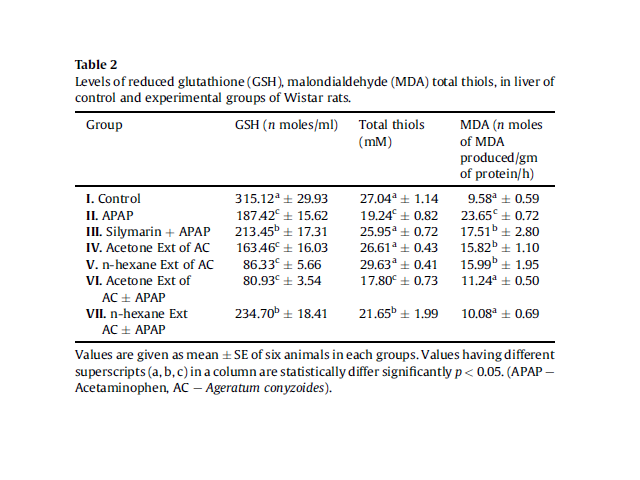Hepatoprotective mechanisms of Ageratum conyzoides L. on oxidative damage induced by acetaminophen in Wistar rats
Keywords:
Acetaminophen , Ageratum conyzoides , Oxidative damage , HepatocytesAbstract
Background and objectives: Drug induced hepatotoxicity is a major health issue concern by drug regulatory agencies, pharmaceutical industry and health care professionals. Present study was aimed to investigate the hepatoprotective mechanisms of n-hexane and acetone extract of Ageratum conyzoides on oxidative damage induced by acetaminophen (APAP) in Wistar rats. Materials and methods: 42 Wistar rats were randomly divided into seven groups. Group I and II receive distilled water, CMC respectively. Group III was fed with standard drug silymarin, group IV and V received plant extracts only whereas group VI and VII received pretreatment with acetone and n-hexane extracts for seven days respectively and APAP was administered on the 5th day. Samples were collected on 48 h of post APAP administration and analysis was done using standard protocols. Results: Significant (p < 0.05) increased in MDA, G6PD and GST and significant (p < 0.05) decrease in SOD, GSH, total thiols in liver tissue was observed in APAP exposed group as compared to control. The preexposure of acetone and n-hexane extracts of A. conyzoides fallowed by APAP exposure significantly (p < 0.05) reduce activities of G6PD, GST and MDA levels as compare to APAP exposed group, whereas total thiols and GSH levels are restored only in n-hexane extract of A. conyzoides. Conclusion: Observations of present study suggested that pre-exposure of n-hexane extract of A. conyzoides restore the levels of total thiols, GSH and GST activity which may be responsible for reducing oxidative damage induced by APAP administration.
Downloads
Metrics





